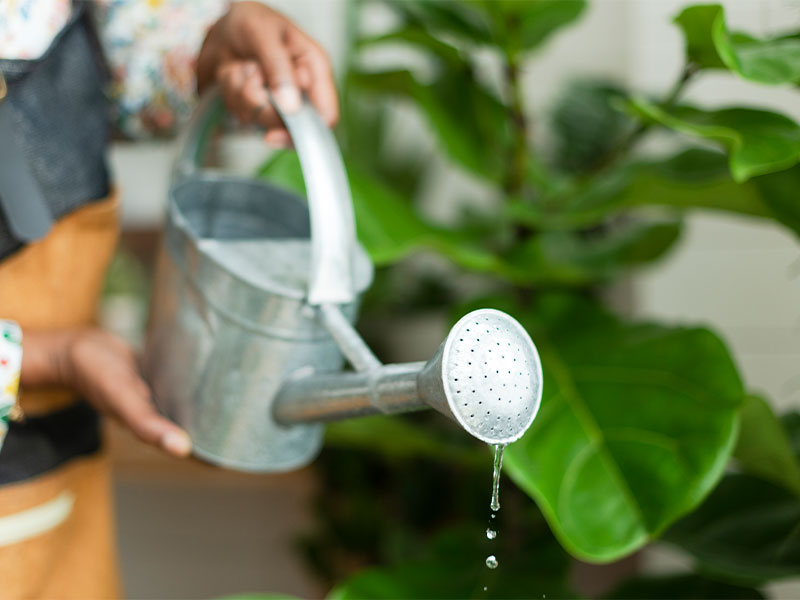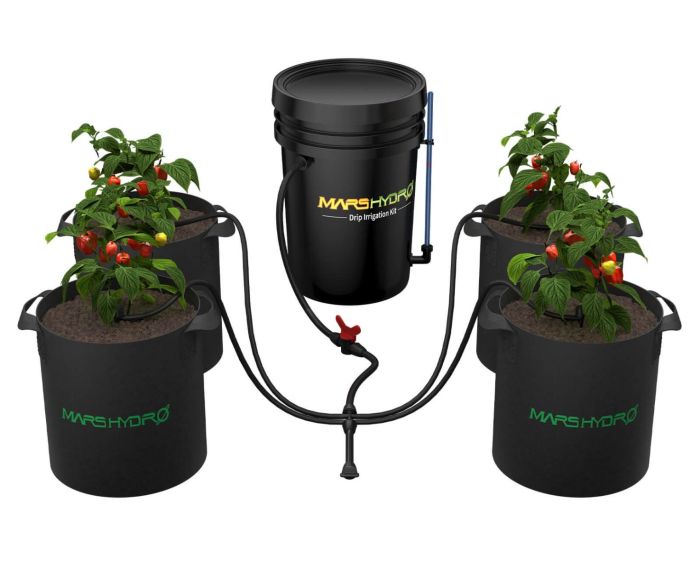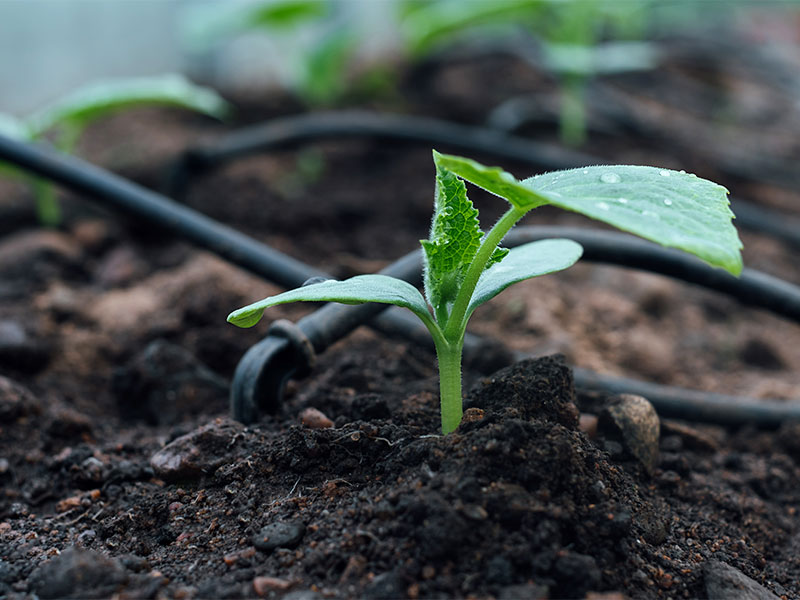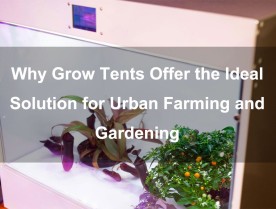
When it comes to picking the right irrigation method, deciding between manual watering and drip irrigation systems is key for using water wisely and helping your plants thrive—something that's increasingly important as we face the challenges of climate change and water scarcity. So, let's dive into a comparison of these two systems, examining their parts, how they work, and their effects on plant health and saving resources.
Objective Comparison
When considering the most effective method for watering plants, both drip irrigation systems and manual watering have distinct advantages and limitations. This objective comparison will detail the efficiency, cost, maintenance, and suitability of each method across various gardening and agricultural contexts.
Efficiency and Water Usage
Drip Irrigation Systems:
- Highly Efficient: Drip irrigation delivers water directly to the root zone of plants, minimizing evaporation and runoff. This precision significantly enhances water usage efficiency, making it particularly effective in arid climates and sandy soils.
- Conserves Water: Due to targeted delivery, these systems use water more conservatively, reducing the total volume required for healthy plant growth.
Manual Watering:

- Less Efficient: Manual watering typically involves sprinklers or hoses, which can lead to significant evaporation and runoff. It's often difficult to control the exact amount of water each plant receives, potentially leading to over or under-watering.
- Higher Water Use: Generally, manual methods consume more water to achieve similar growth results compared to drip systems, especially in large or uneven landscapes.
Cost and Installation
Drip Irrigation Systems:
- Higher Initial Cost: Installing a drip irrigation system involves upfront costs for components such as tubing, emitters, filters, and pressure regulators. However, many kits are available that simplify installation for home gardeners.
- Long-Term Savings: Over time, the reduction in water use and labor typically offsets the initial investment, particularly in commercial agricultural settings.
Manual Watering:
- Low Initial Cost: Manual watering requires minimal initial investment, typically needing only basic equipment like watering cans or hoses.
- Increased Labor Costs: In larger gardens or farms, the labor cost of manual watering can become significant over time, potentially surpassing the initial savings on infrastructure.
Maintenance and Reliability
Drip Irrigation Systems:
- Maintenance Required: Drip systems require regular maintenance to ensure emitters and filters are not clogged, and the system is operating at correct pressure levels.
- Highly Reliable: When maintained properly, drip systems provide consistent, reliable watering. Automation through timers can further enhance reliability, ensuring plants are watered precisely and consistently.
Manual Watering:
- Low Maintenance: Beyond basic care of watering equipment, manual methods require little maintenance.
- Varies in Reliability: Manual watering depends heavily on the individual's availability and attention to detail. It can be less reliable in maintaining consistent soil moisture levels, particularly in larger or more complex gardens.
Suitability and Flexibility
Drip Irrigation Systems:
- Versatile: Ideal for a wide range of plants, including row crops, vegetable gardens, flower beds, and container plants. They can be customized to suit different soil types and layouts.
- Not Always Ideal for Lawns: Drip systems are less commonly used for large lawn areas where broad coverage sprinkler systems might be more efficient.
Manual Watering:
- Highly Adaptable: Easy to adapt to different types of plants and gardens. Manual methods allow for quick adjustments in watering based on immediate observations.
- Labor-Intensive for Large Areas: Not suitable for large-scale or commercial operations due to the extensive labor and time required.
Environmental Impact
Drip Irrigation Systems:
- Reduces Fungal Diseases and Weeds: By limiting water to the plant's base, these systems help prevent the spread of fungal diseases and reduce weed growth.
- Saves Water: Drip irrigation is beneficial for environmental conservation due to its efficient use of water, a crucial factor in drought-prone areas.
Manual Watering:
- Potential for Over-Watering: There is a higher risk of over-watering, which can lead to increased runoff and nutrient leaching, adversely affecting local water quality.
The automated nature of drip irrigation systems simplifies the irrigation process and greatly enhances its efficiency. Water is delivered right to the plant roots, precisely where it's needed most, thereby minimizing waste and ensuring that every drop is used effectively. This focused approach not only conserves water but also optimizes the use of available water resources. Moreover, drip irrigation allows for precise control over the environment in which plants grow. By adjusting the volume and frequency of watering, the system can be customized to suit the specific requirements of different plants and soil types, creating ideal conditions for plants to thrive.
Although drip irrigation is known for its water efficiency and cost savings in the long run, manual watering remains a practical choice, especially for smaller areas or situations where setting up a drip system might be costly upfront. However, if you're looking to enhance your watering experience and make it more convenient, opting for drip irrigation kits can be a great choice for your smart indoor garden.
Now, let's delve into the components of the Mars Hydro Drip Irrigation Systems to understand how they can elevate your indoor gardening experience.
Components of Mars Hydro Drip Irrigation Systems

The Mars Hydro Drip Irrigation System is a comprehensive kit that packs everything you need to get started with hydroponics, whether you’re a beginner or an expert. The components of the Drip Irrigation Kit include:
1. Water Bucket (5 gallons): This bucket is used to hold water or nutrient solutions and is made of corrosion-resistant polypropylene material. Next to the bucket, there is a water level indicator tube with a red float positioned to show the water level inside the opaque bucket.
2. Drip Irrigation System: It consists of two sizes of tubing and 8 water emitters. The tubing can be cut to the desired length, and the emitters are staked around the plants for drip irrigation. Each water emitter can control its own water output by turning its knob head.
3. Water Pump (22W, 800L/H): This pump provides powerful water flow to pump water from the bucket to the drip irrigation system. A strainer can be connected to the inlet of the pump to filter particles from the water and prevent clogging of the pipes.
Usage
- Fill the 5-gallon water bucket with water or nutrient solution.
- Cut the tubing to the desired length and stake the water emitters around the plants.
- Place the water pump inside the bucket and connect its outlet to the tubing of the drip irrigation system.
- (Optional) Connect a strainer to the inlet of the water pump to filter particles from the water.
- Use the red water valve to control the total water volume, facilitating control over the water volume of each emitter.
- For automatic drip irrigation, the system can be paired with a timer or iHub smart power strip.
Following these steps, you can complete the installation and use of the drip irrigation system, providing convenient and regulated watering for indoor plants.
What Can Drip Irrigation Systems Do?

The Mars Hydro Drip Irrigation Kits are expertly designed for efficient indoor plant watering, offering several advantages that make them particularly suitable for various indoor gardening environments. This system prioritizes eco-friendly practices by minimizing water waste through precise water delivery directly to the plants' root zones. This not only conserves water but also reduces unnecessary evaporation and runoff, making it an ideal choice for environmentally conscious gardeners.
Featuring automation and customizability, the kit includes a timer and adjustable drip emitters that allow users to set up automatic watering schedules tailored to the specific needs of their plants. This automated system ensures consistent and hassle-free plant care, which is especially beneficial for busy individuals or those new to gardening who might not have the time to water plants manually. The ease of installation, with all necessary components and a clear instruction manual, further enhances its appeal, particularly for novice gardeners.
The Mars Hydro Drip Irrigation Kits are particularly well-suited for indoor gardens and grow tents, where space and resource efficiency are crucial. They are also ideal for more intensive setups like herb and vegetable indoor farms, where precise watering can significantly impact plant health and yield. Whether for a beginner interested in starting a small indoor garden or a more experienced grower focusing on a larger scale operation, this drip irrigation system offers a reliable and effective watering solution that can adapt to a variety of indoor agricultural needs.
Conclusion
Choosing the right irrigation method is crucial for efficient gardening, and drip irrigation systems stand out for their superior efficiency and sustainability. Drip irrigation delivers water directly to the roots, minimizing waste and significantly reducing water usage—ideal for arid climates and essential in large-scale agricultural settings. Although the initial setup cost is higher, the long-term savings in water and labor are substantial, making it a wise investment. This system not only conserves water but also prevents diseases and reduces weed growth, enhancing plant health and productivity. While manual watering remains an option for smaller gardens or when cost is a barrier, the environmental and economic benefits of drip irrigation make it a pivotal tool for modern agriculture.







